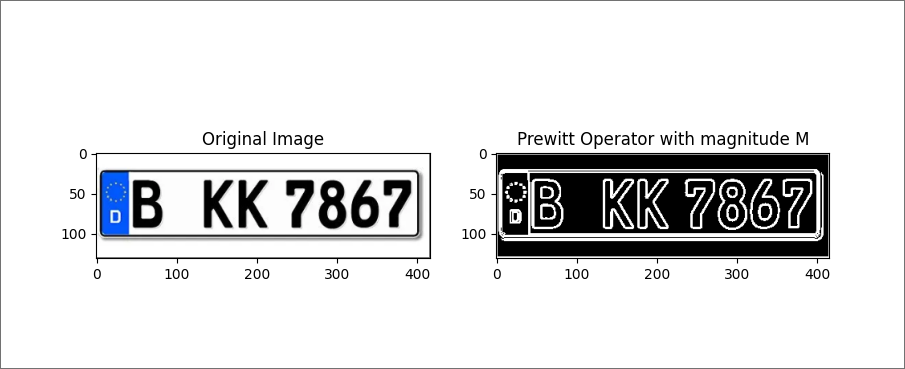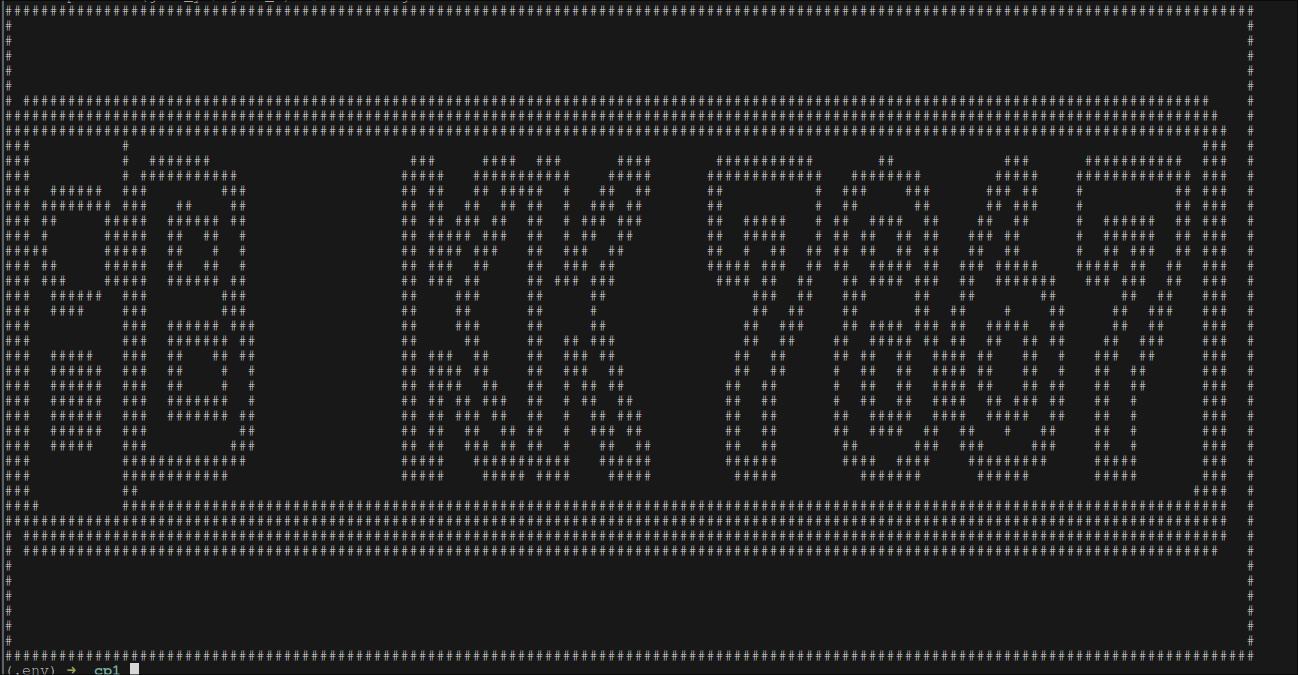Problem 2.3
Provide two illustrations of how derivatives are applied in real-world scenarios.
One of the most useful application would be license plate Detection
given License plate picture we can perform edge Detection as discussed in previous problem Prewitt-Operator with following steps
- transform picture into gray_scale image
- calculate convolution
- apply filter to detect edges
- use threshold to get cleared-view
this is the following result

from which we can extract license plate number much easily. simplest solution would be to print some character(i.e #) whenever we encounter
value of 1 (which is the highest value in processed image) in the image matrix.
even with such simple approach we can get pretty good results.

with following implementation
import numpy as np
import skimage.io as io
from skimage.filters import gaussian
import skimage.color as color
import matplotlib
from scipy.signal import convolve
matplotlib.use("TkAgg")
import matplotlib.pyplot as plt
def convert_to_rgb_format(img):
if img.shape[2] == 4:
img = color.rgba2rgb(img)
return img
def convert_to_gray_scale(img):
return color.rgb2gray(img)
def threshold(g, T):
h, w = g.shape[:2]
for j in range(h):
for i in range(w):
if g[j, i] >= T:
g[j, i] = 1
else:
g[j, i] = 0
return g
def extract_characters(image, max_print_size=120):
m, n = image.shape[:2]
resolution = min(max_print_size / max(m, n), 1)
step_size = int(1 / resolution)
for i in range(0, m, step_size):
for j in range(0, n, step_size):
if np.any(image[i : i + step_size, j : j + step_size] == 1):
print("#", end="")
else:
print(" ", end="")
print()
def prewitt_operator(g):
h_x = np.array([[1, 0, -1], [1, 0, -1], [1, 0, -1]])
h_y = np.array([[1, 1, 1], [0, 0, 0], [-1, -1, -1]])
grad_x = convolve(g, h_x, mode="same")
grad_y = convolve(g, h_y, mode="same")
M = np.sqrt(grad_x**2 + grad_y**2) # NOTE: magnitude M
A = np.arctan(grad_y / grad_x) # NOTE: angle A
return M, A
img = io.imread("./plate.png")
#NOTE: to test gaussing blur
# _img = gaussian(img, sigma=5)
img = convert_to_rgb_format(img)
g = convert_to_gray_scale(img)
M, A = prewitt_operator(g)
M_th = threshold(M, 0.5)
extract_characters(M_th)
plt.figure(figsize=(10, 5))
plt.subplot(1, 2, 1)
plt.imshow(img)
plt.title("Original Image")
plt.subplot(1, 2, 2)
plt.imshow(M_th, cmap="gray")
plt.title("Prewitt Operator with magnitude M")
plt.show()
Unsuccessful findings
the drawback of this method is that it is sensitive to image noising. this is the illustration of the same image with Gaussian blurr
with

Another application of Derivatives is Image Denoising with Gradient-Descent (GDM)
for typical GDM method would be to minimize some objective function
We consider functional
The second term is the regularizing term, which performs actually the noise reduction.
A typical choice of the fidelity term is the convex functional
where
For the regularizing term, we start with the simplest choice (also convex)
Then the problem is: find a minimum
For using the gradient descent method we need to compute the gradient of
Then, the gradient descent algorithm gives
this is the illustration of application of GDM on picture.
